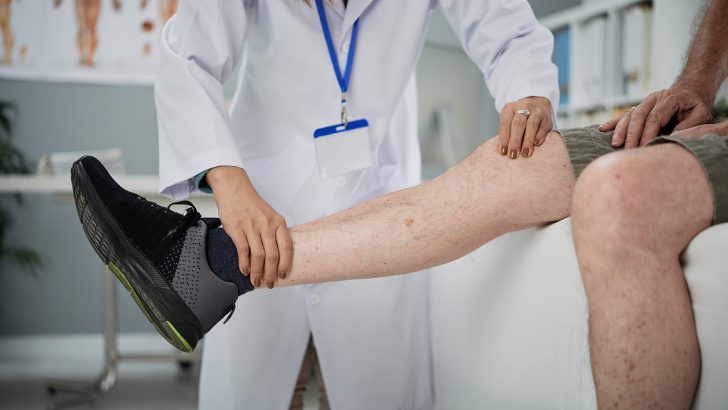Medical Matters
Discomfort in the legs is not an uncommon complaint encountered by older adults and can significantly affect quality of life. Restless leg syndrome can occur at any age but is more common as one gets older. It’s characterised by an uncomfortable sensation that results in an uncontrollable urge to move your legs. This can be felt as an ache, throbbing or itch which is relieved by leg movement. It tends to occur more frequently in the evening and especially at night often resulting in broken sleep and getting up out of bed.
Leg cramps due to spasm of the muscles in the lower leg often occur at night”
The cause of restless legs syndrome is unclear, though in some cases it is associated with iron deficiency which when corrected can improve symptoms. It’s also sometimes found in conjunction with some neurological conditions but in the vast majority of cases occurs in isolation. Medications that increase dopamine in the brain and that interestingly are also used to treat Parkinson’s are the mainstay of therapy and are very effective. They are usually taken about two hours before bedtime, though a 24-hour patch that can be applied once daily is also available. There’s also a number of other treatments that work very well. Some medications may worsen restless leg syndrome including drugs used for vertigo, nausea, depression and epilepsy, so it’s important to make sure these are avoided. Lifestyle changes like moderate exercise, avoiding caffeine and applying heat or cold packs can also help.
Leg cramps due to spasm of the muscles in the lower leg often occur at night. In many cases, no specific cause is found but low potassium or magnesium can be a factor and when troublesome should be checked. Stretching exercises with your legs during the day can help reduce the frequency of cramps. It’s also important to avoid dehydration which may make it worse. Taking a warm bath or applying heat packs can relieve symptoms too. For more difficult cases, the drug quinine can be used, available on prescription from your doctor. Statins used to treat high cholesterol can also cause muscle aches though they tend to be more generalised.
Pain may be felt as a heaviness, dullness, or sharp or stabbing due to pressure on nerves as they exit the spine”
A burning sensation in the lower legs is a symptom which in particular can be very troublesome and in many cases occurs due to damage or irritation (neuropathy) of the cutaneous nerves. It is often worse in bed and can be exacerbated by heat. It can result from a number of conditions such diabetes, vitamin B12 deficiency and alcohol excess, as well as poor circulation though the exact cause is often not identified. Medications that specifically act to dampen nerve activity can help with symptoms.
Pain in the calves or thigh which occurs on walking a certain distance and is relieved by rest is suggestive of poor circulation. It can be investigated with ultrasound that measures blood flow both at rest and after exertion. If abnormal, then further tests to define the location and extent of any blood vessel narrowing can be done. Moderate exercise as tolerated, avoiding smoking and some medications may help with symptoms but depending on the severity of disease, a procedure to improve blood flow in the vessels may be needed.
Pain in the legs on walking can also be due to narrowing of the spinal canal due to disc disease and osteoarthritis of the vertebral joints. It can also be associated with pain that radiates from the back or groin into the thigh or further down the leg into the foot. Pain may be felt as a heaviness, dullness, or sharp or stabbing due to pressure on nerves as they exit the spine. It can often be aggravated by different positions. MRI imaging will clarify the diagnosis and extent of degenerative spine disease. Apart from medications for pain, specific treatments including spinal nerve blocks can be used, though in more advanced cases surgery to alleviate the pressure on nerve roots is required.
If you have troublesome symptoms, make sure and get it checked out by your GP”
Pain in the knee from osteoarthritis is very common resulting from ‘wear and tear’ under the knee cap as well as within the joint. It tends to be exacerbated by weight bearing and bending movements of the knee such as walking up a stairs. Topical anti-inflammatory gels that can be rubbed over the joint can be very effective. Simple analgesics like paracetamol should also be tried too. Low dose opioid patches applied once weekly are also efficacious, convenient to use and provide continuous background analgesia as opposed to tablets which ‘wear off’. An injection of steroids and anaesthetic into the knee can also work well, particularly if it is swollen and inflamed. However, the relief may only be short term, though it can be repeated after about three months. Pain in the knee may also be referred from the hip when affected by arthritis. In general, moderate exercise is encouraged as it can help prevent joint stiffness and maintain mobility. If you have troublesome symptoms, make sure and get it checked out by your GP.


 Dr Kevin McCarroll
Dr Kevin McCarroll
